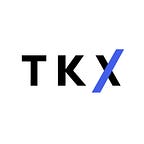DePIN: A Game Changer? | TKX Weekly
by @uuwagyuu
sponsor TKX CAPITAL
Introduction
DePIN, short for Decentralized Physical Infrastructure Networks, has recently emerged as a prominent trend in the blockchain and technology sectors. While this concept isn’t entirely new, having been first introduced by Messari in late 2022, it has gained renewed focus and development, particularly within the resurging Solana ecosystem.
So what is DePIN? DePIN involves using blockchain to drive and reward the creation and management of real-world infrastructure. These networks, also known as Physical Proof of Work (PoPW), Token Incentivized Physical Infrastructure Networks (TIPIN), or EdgeFi networks, work on a decentralized model. They use blockchain’s trustless and permissionless features for large-scale infrastructure deployment and management. This approach is different from the traditional centralized methods, as it offers a more equitable and efficient way of building and maintaining infrastructure.
What is DePIN solving?
DePIN addresses the foundational challenges of traditional infrastructure development. It solves the classic ‘chicken and egg’ dilemma by using token incentives to motivate individuals to contribute to the network’s supply side. This strategy helps attract end-users, fostering adoption and enabling competition with established Web2 companies. Moreover, DePIN’s decentralized framework enhances efficiency, security, and resilience, surpassing traditional centralized models. It achieves cost-effectiveness through equitable resource distribution and shared responsibilities across a broad network of participants, while also minimizing the risks associated with single points of failure, thereby bolstering the network’s overall robustness.
Main Sectors
- Decentralized Server Networks: These involve the use of blockchain technology for managing and incentivizing decentralized storage and server resources. Projects like Filecoin and Arweave are examples of decentralized server networks, offering blockchain-based solutions for data storage.
- Wireless Networks: This category includes projects like Helium, which focus on decentralized wireless infrastructure. By using blockchain technology, these networks incentivize users to deploy and maintain hardware like WiFi hotspots or other wireless communication devices.
- Sensor Networks: These networks leverage decentralized systems for collecting and processing data from various types of sensors. The data collected can range from environmental information to traffic patterns, and the decentralized nature of these networks ensures data integrity and security.
- Energy Networks: DePIN in the energy sector involves decentralized systems for managing energy distribution and usage. This could include peer-to-peer energy trading platforms or decentralized systems for managing renewable energy resources.
Business Model
The business model for DePIN primarily revolves around leveraging blockchain technology to coordinate and incentivize the deployment of real-world physical infrastructure. This model focuses on two key aspects:
- Demand Generation: DePIN networks create value by incentivizing individuals to contribute resources (like storage space, bandwidth, or computational power) to the network. This contribution is rewarded with tokens, driving the network’s growth and attracting end-users.
- Value-Added Resellers (VARs): DePIN networks often leverage VARs to make their services more appealing to traditional consumers and businesses, who typically prefer buying from established companies rather than directly from a permissionless network. VARs play a crucial role in bridging this gap. They translate network offerings into products and services that resonate with consumer expectations.
Challenge
The path for DePIN involves overcoming these hurdles while innovating in a highly competitive environment.
- Incentive Dilution: DePIN uses cryptocurrency for rewards, which can dilute the value for initial holders and destabilize the project’s economy.
- High Development Costs: DePIN projects require longer and more complex development than typical consumer-centric Web3 apps.
- Competitive Market: DePIN faces tough competition from established Web2 giants, challenging its market positioning.
Projects
Hivemapper: This initiative is building a decentralized world map. Contributors capture and upload street-level images using dashboard cameras, earning $HONEY tokens for their participation. The project’s strength lies in its updated and community-sourced mapping data.
Render Network: Render utilizes a decentralized array of GPUs to provide digital rendering services. It effectively harnesses underutilized GPU resources, offering a more economical and scalable solution for high-quality digital rendering tasks.
Arweave: This project is focused on long-term data storage. It employs a decentralized network to offer scalable and permanent data storage solutions, with a unique approach that ensures data is stored perpetually.
Helium: It revolutionises wireless infrastructure by encouraging users to set up Hotspots. These Hotspots facilitate LoRaWAN network coverage for IoT devices. Participants are rewarded with HNT tokens for their efforts in network coverage and data verification.
Thoughts
With Solana’s comeback, DePIN is gaining renewed interest, potentially reshaping network infrastructure approaches. While this presents a chance for growth and innovation, DePIN must overcome regulatory challenges and prove its merit against established centralized services. The balance between innovation and sustainability, particularly in energy use, will be crucial for wider acceptance. Solana’s role in this evolution could be a game-changer for DePIN, signalling a transformative era in digital and physical infrastructures.
Reference
https://messari.io/report/the-depin-sector-map?referrer=all-research
